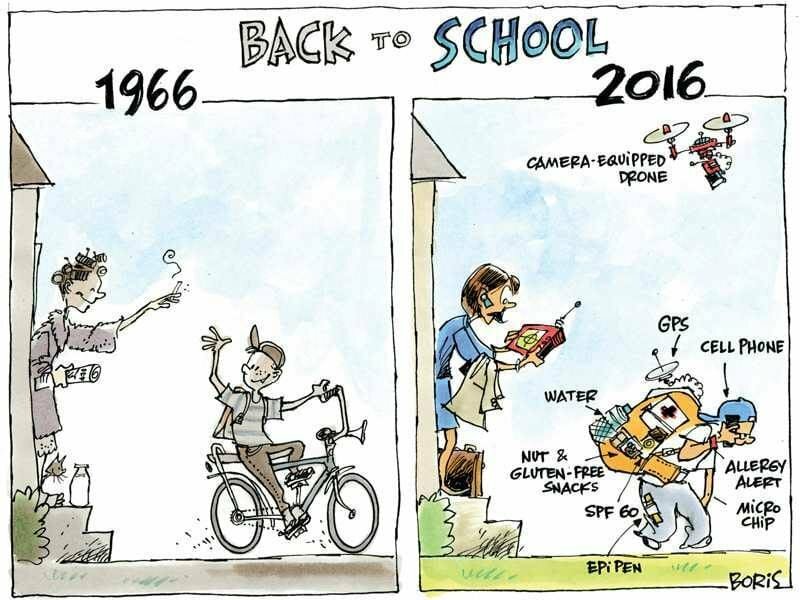e-Learning Ecologies MOOC’s Updates
Old Media in the New Media
We've all probably seen something like this posted on social media:
The irony, of course, is that this was posted and viewed by the same technology that it seems to be lamenting. Traditionally something like this may have been published in a newspaper, where it was expected to be viewed. You could write a letter to the editor in response, which most likely would be ignored, but that would be the limits of itvity. However, when posted to social media people can comment it on it positively or negatively, they can repost the comic and present it through a new lens. They can even use a computer to digitally alter the comic itself and give it new meaning, perhaps even turning it into a meme.
The comic as printed in a newspaper is an example of old media. It is analog and is limited in its interactivity. Conversely, when this comic is posted on social media, it becomes part of new media; it is interactive and computerized[1].
New media allows you to not only consume but also produce. You can even produce responses to old media, such as our example of the comic. It can be deconstructed and criticized, and others will consume the product. Take for example the following video criticizing the content of comics that are aimed at boomers:
It has almost 800 thousand views, probably more people have consumed this video criticizing these comics than the comics as they were originally presented. Consequently, not only can you create your own meaning, but also present it for others to consume. And it goes even further than that, now others can respond to this video which adds further meaning and dimenson.
It is interesting to see the interplay between old and new media and the different meanings people can create from the same content.
Footnotes
- ^ Manovich, Lev. "New Media From Borges to HTML". The New Media Reader. Ed. Noah Wardrip-Fruin & Nick Montfort. Cambridge, Massachusetts, 2003. 13–25. ISBN 0-262-23227-8




The influence of social media in communication today is incredible, one may say that it pushed people together in what may seem closer, as everything is more reachable and we can connect with people far away... but the reality is that often it pulled us further away. I cannot even start to discuss what would have been an email, a letter or a phone call before.. and how that lost impact compared to a simple like or dislike, a retweet, a comment on facebook or on a company's social media page. The impact is much greater, and they look forward to engage only if it's visible to others..
This is such a good way to show the difference of how learning then and learning now has evolved. Humor is one good way to teach. In just a dew minutes, viewers can understand is being taught.